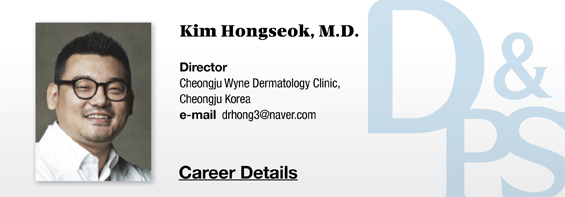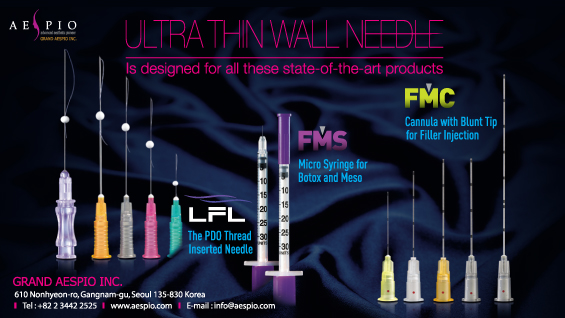
Aloesin
Aloesin is c-glycosylated chromone naturally derived from aloe vera. This competitively inhibits tyrosinase thereby inhibiting the tyrosine→DOPA, DOPA→DOPAquinone process. Moreover, it lowers tyrosinase activity and melanogenesis in a dose-dependent manner[i][ii]. Aloesin has been shown to bring more potent tyrosinase inhibition compared to arbutin and Kojic acid[iii]. Comparison between aloesinn and arbutin showed that when used 4 times daily over 15 days in pigmented lesions of UV-irradiated human skin, 34% pigment inhibition was achieved with aloesin alone, 43.5% with arbutin alone and 63.3% with aloesin and arbutin combined[iv].
One study compared the efficacy of aloesin, polyphenol and arbutin. All three were found to be effective in reducing melanin by inhibiting tyrosinase. Polyphenol has shown excellent efficacy but it also had high toxicity. On the other hand, aloesin had the second highest efficacy next to polyphenol with little toxicity and was shown to be a safe whitening agent[v].
Arbutin
Arbutin (hydroquinone-glucose, C12H16O7) is a naturally occurring substance (β-D-glucopyranoside) which has the chemical structure of glucose attached to an HQ molecule. It was used in traditional remedies in Japan and is found in leaves of Western pear trees, wheat or bearberry, etc. Arbutin is known to inhibit melanosomal tyrosinase activity and does not affect melanocyte differentiation. It is thought to inhibit post-differentiation tryrosinase expression and melanogenesis but the exact mechanism is not clearly understood[vi]. However, arbutin is a common ingredient in many whitening products as well as other cosmetic products. It seems that more evidence is needed to prove its whitening action. DeoxyArbutin (dA), a synthetic extract of arbutin, has been shown to have more potent tyrosinase inhibition in both in vitro and in vivo studies. dA as well as second generation extracts such as deoxyFuran, 2-fluorodeoxyArbutin, and thiodeoxyArbutin inhibit tyrosine hydroxylase, tyrosinase dopa oxidase in a dose-dependent manner to inhibit melanogenesis. HQ induces early apoptosis of melanocytes (cytotoxic action), but dA and second generation extracts inhibit melanocyte differentiation to reduce the number of melanocytes (cytostatic action). HQ produces a lot of reactive oxygen species (ROS), whereas dA and second generation extracts produce a small amount during their mechanism of action, making them a safer choice for treating pigmented lesions[vii].
[Advertisement] ULTRA THIN WALL NEEDLE – Manufacturer: AESPIO(www.aespio.com)
Flavonoid
Over 4,000 flavonoids are found in leaves, tree bark or flower petals and all contain phenol and pyrane ring which belong in the benzopyrane class. Flavonoids also have whitening action and are largely divided into 6 groups; flavonols, flavones, isoflavones, flavanones, anthocyanidins, and flavanols. These substances have anti-oxidative action as well as directly inhibit tyrosinase to act on the melanogenesis oxidative pathway.
Hydroxycoumarin
Coumarin is a naturally occurring phenol which directly interacts with tyrosinase. It is commonly used in cosmetics or skin care products. In a study examining the protective effect of hydroxycoumarin in UV exposed cells showed that 4-hydroxycoumarin, 6-hydroxycoumarin, 7-hydroxycoumarin, 6,7-dihydroxycoumarin, and 6-methoxy-7-hydroxycoumarin had no photoprotective effect, whereas 3-hydroxycoumarin did[viii]. A study examining the antimelanogenic activity of 6 hydroxycoumarins and α-tocopherol found that hydroxycoumarin 4 had potent melanogenesis inhibition and prevented hyperpigmentation.
Kojic acid
Kojic acid (C6H6O6) is a fungal metabolite commonly produced from various species including Aspergillus, Acetobacter, and Penicillium. It is used as a food additive that inhibits necrosis and reddens unripe strawberries. It is chelated with Cu to inhibit tyrosinase activity and is used in many whitening products as well as treatment of melasma. When used in cosmetic products, Kojic acid has antiseptic and antibacterial actions. Its biggest advantage is that it is more stable than HQ and other whitening agents. It has been long used as a whitening cosmetic product in Korea and Japan in the concentrations of about 1-4%. A study found that Kojic acid combined with glycolic acid (GA) in hyperpigmentation brought better results than 10% GA and 4% HQ alone. Melasma treatment was significantly more effective with a combination of 2% Kojic acid 10% GA+2% HQ compared to therapies without Kojic acid.
Comparison of treatment duration of melasma among 1% Kojic acid alone (Group A), 1% Kojic acid+2% HQ (Group B), 1% Kojic acid+0.1% betamethasone (Group C), and 1% Kojic acid+2% HQ+0.1% betamethasone (Group D) showed that Group B had the best outcome and Group C had the poorest outcome. Therefore, it was found that combining HQ in melasma therapies were more effective[ix].
Topical application of Kojic acid twice daily for 1-2 months or until obtaining desired outcome is advised. However, Kojic acid has a relatively high frequency of contact allergy and is a strong sensitizer. Contact dermatitis will develop with application of 2.5% Kojic acid and even with 1% concentration in some cases. It is widely used in foods. It a recent study, oral intake of Kojic acid was reported to cause hepatocellular tumor in p53-deficient mice. Injecting Kojic acid has been reported to cause seizure.
[i] Jones K, Hughes J, Hong M, et al. Modulation of melanogenesis by aloesin: a competitive inhibitor of tyrosinase. Pigment Cell Res. 2002 Oct;15(5):335-40.
[ii] Wang Z, Li X, Yang Z, He X, et al. Effects of aloesin on melanogenesis in pigmented skin equivalents. Int J Cosmet Sci. 2008 Apr;30(2):121-30
[iii] Piao LZ, Park HR, Park YK, et al. Mushroom tyrosinase inhibition activity of some chromones. Chem Pharm Bull (Tokyo). 2002 Mar;50(3):309-11.
[iv] Choi S, Lee SK, Kim JE, Chung MH, Park YI. Aloesin inhibits hyperpigmentation induced by UV radiation. Clin Exp Dermatol. 2002 Sep;27(6):513-5.
[v] Yang ZQ, Wang ZH, Zhang TL, et al. The effect of aloesin on melanocytes in the pigmented skin equivalent model. Zhonghua Zheng Xing Wai Ke Za Zhi. 2008 Jan;24(1):50-3.
[vi] Inoue Y, Hasegawa S, Yamada T, Date Y, Mizutani H, Nakata S, et al. Analysis of the effects of hydroquinone and arbutin on the differentiation of melanocytes. Biol Pharm Bull. 2013;36(11):1722-30.
[vii] Chawla S, Kvalnes K, deLong MA, Wickett R, Manga P, Boissy RE. DeoxyArbutin and its derivatives inhibit tyrosinase activity and melanin synthesis without inducing reactive oxygen species or apoptosis. J Drugs Dermatol. 2012 Oct;11(10):e28-34.
[viii] de Araujo Leite JC, de Castro TM, Barbosa-Filho JM, de Siqueira-Junior JP, Marques-Santos LF. Photoprotective effect of coumarin and 3-hydroxycoumarin in sea urchin gametes and embryonic cells. J Photochem Photobiol B. 2015 May;146:44-51.
[ix] Deo KS, Dash KN, Sharma YK, Virmani NC, Oberai C. Kojic Acid vis-a-vis its Combinations with Hydroquinone and Betamethasone Valerate in Melasma: A Randomized, Single Blind, Comparative Study of Efficacy and Safety. Indian J Dermatol. 2013 Jul;58(4):281-5




















